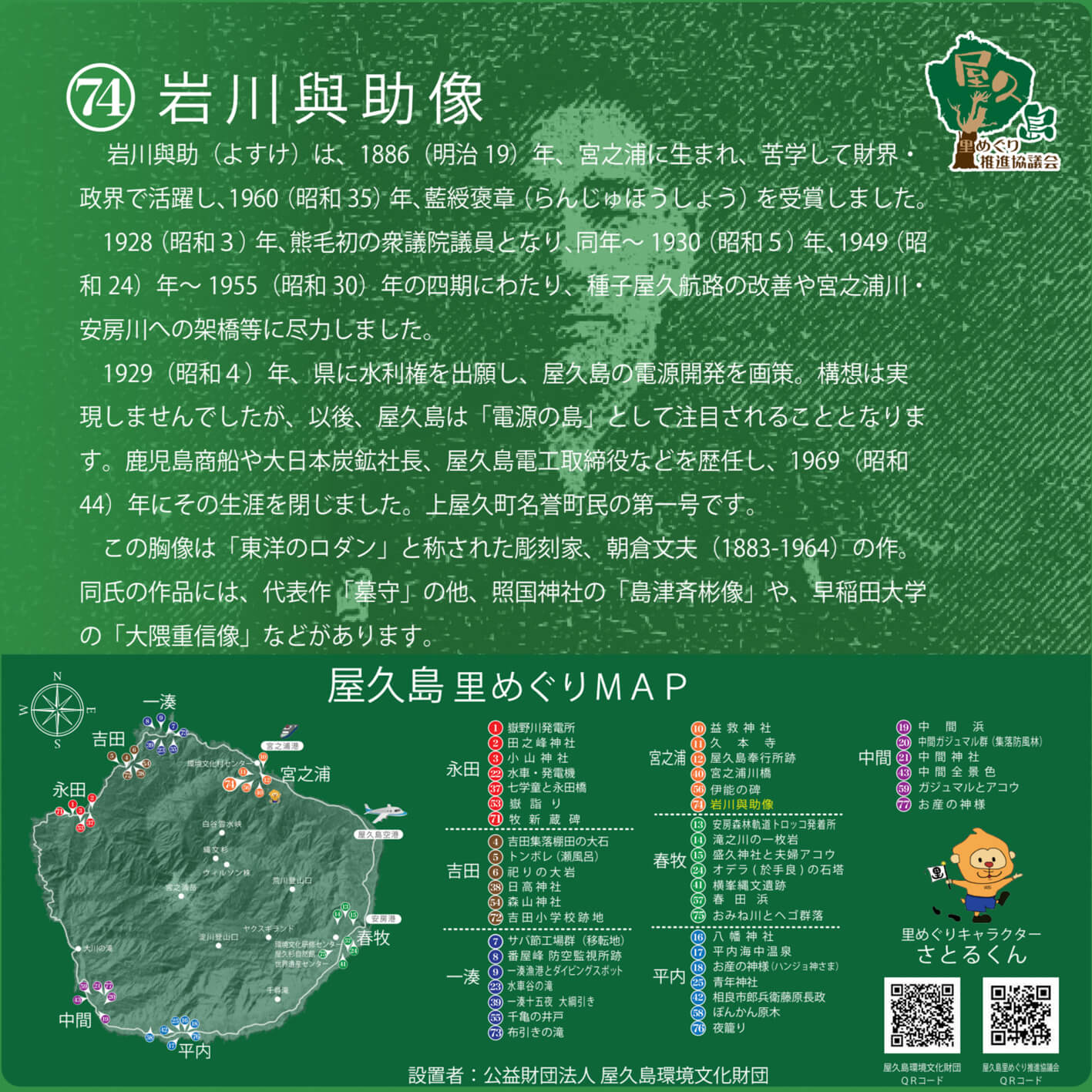Statue of Iwakawa Yosuke
- Modification: 2024/01/11
- Area: miyanoura
Iwakawa Yosuke was born in Miyanoura in 1886 (Meiji 19), put himself through school, and subsequently flourished in the political and economic world. In 1960 (Shōwa 35), he received the blue-ribbon Ranjuhōshō, or the Japanese Medal of Honor, which is awarded to those who have made significant contributions in the realm of public welfare or public service.
In 1928 (Shōwa 3), Iwakawa became the first member of the Lower House of Parliament from Kumage (the administrative region of Yakushima and Tanegashima), and served four terms during the periods of 1928–1930, and 1949-1955 (Shōwa 30). He accomplished both the revitalization of shipping routes to Tanegashima and Yakushima, as well as the completion of bridges across the Miyanoura and Anbo Rivers on Yakushima.
In 1929 (Shōwa 4), he appealed to the prefectural government for local water rights, and drew up plans for Yakushima’s hydroelectric development. His vision didn’t come to fruition, but later, Yakushima drew wider attention as its potential as an “island of electricity.” Iwakawa adopted several successive professional roles, including company director and board member, and in 1969 (Shōwa 44) he passed away. His prestige and accomplishments remain a historical source of pride for Kamiyaku, or the northern half of Yakushima island.
This bust was created by Fumio Asakura (1883–1964), who was known as the “Rodin of the East.” Asakura is known for his works such as “Cemetery Keeper” (Hakamamori), the statue of Shimadzu Nariakiya at Terukuni Shrine in Kagoshima City, and the statue of Shigenobu Ōkuma at Waseda University.














